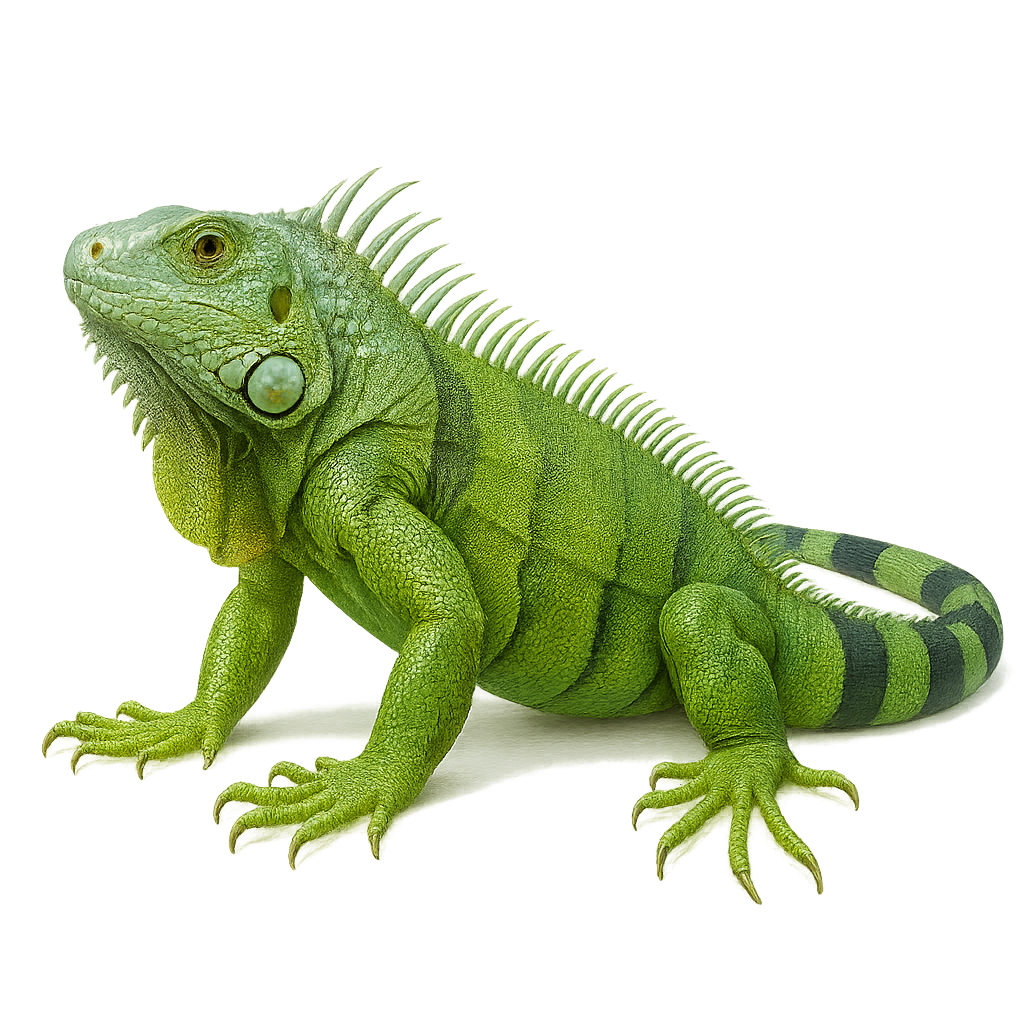Observe and photograph a species in its natural habitat
Learn where and when to observe a species in the wild, how to recognize it in the field, and what habitats it lives in. Get photography tips adapted to its behavior and capture stunning images without disturbing the animal. For full details, open the complete profile in the WildlifePhotographer app.
Green iguana
Scientific name: Iguana iguana

IUCN Status: Least Concern
Family: IGUANIDAE
Group: Reptiles
Shyness: Suspicious
Safe distance: 5 m
Breeding season / Courtship: 01.12-31.03
Gestation: N/A
Births: 01.05-31.07
Habitat:
Tropical and subtropical forests, woodlands, and riverbanks of Central and South America and the Caribbean
Description:
The Green Iguana is a large herbivorous reptile, easily recognizable by its long and sturdy body, as well as its bright green coloration. It measures between 1.5 and 2 meters in length, including its tail, and can weigh between 4 and 5 kg. Its body is covered with large scales and plates, and it has a crest running down its back. Its vibrant green color, especially in young individuals, becomes duller with age. The Green Iguana primarily inhabits tropical forests, mangroves, and wooded areas in Central and South America, as well as parts of the Caribbean. This reptile is primarily herbivorous, feeding on leaves, fruits, flowers, and sometimes young shoots. The Green Iguana is an excellent climber and spends much of its time in trees or resting on branches. While it is a widespread species, it is threatened by deforestation, illegal collection for the wildlife trade, and habitat loss.
Recommended lens:
>=100 mm
Photography tips:
Use a macro lens or telephoto lens to photograph the green iguana, especially when it perches in trees or moves slowly. Soft morning or evening light is ideal for capturing the details of its face and scales.
Be discreet and respect their space to avoid disturbing their natural behavior.
Ready to take action?
Choose your platform and start your free trial today



